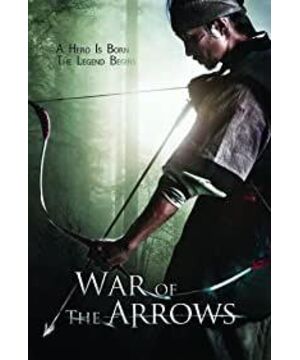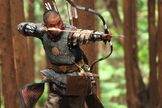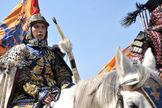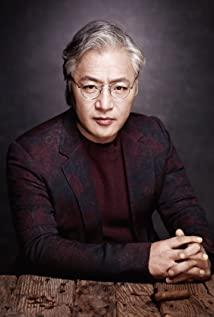Manchuria, also called Jianzhou, claiming to be Jurchen. The Manchurian Jurchens are not the same thing as the Jurchens who established the Jin Dynasty in history.
1. After Jurchen defeated Liao, Jin was established, Jin was defeated by Mongolia, Jurchen was also massacred, and the rest basically
lived in the territory of Yuan. Classified as third class. After the Great Uprising at the end of the Yuan Dynasty, the descendants of the Jurchens, mixed with
the Mongolians, were also massacred by the Han Chinese. After the establishment of the Ming Dynasty, almost no Jurchen descendants returned to the White Mountains and Black Waters.
2. Jurchen Bronze and Manchu Manchu are basically two languages. It can be seen that Manchuria is not the
inheritor .
3. Jurchen is a nomadic people, while Manchuria is a semi-nomadic and semi-agricultural people.
-------------------------------------------------- ----------------------------------------
I didn't want to comment, but I saw this My dear, I think it's better to write casually.
1. Jianzhou Jurchen was only one of the many Jurchen tribes in the Ming Dynasty. In 1635, Huangtaiji changed its name to Manchuria. Manchuria
is a small tribe under the Ministry of Construction. With the unification of the Jurchen tribes, the name Manchuria gradually became prominent
and was used to refer to the entire Jurchen and other conquered Tungusic tribes or tribes.
Just like when Genghis Khan unified the Mongolian grasslands, the Mongolian nation came into being. The Mongolian Ministry where Genghis Khan originally belonged was
only a small tribe under the Qiyan Ministry. There are also many tribes in the grasslands. Such as Mie Erqi,
Tatar , Naiman, Kelie and so on. There are many small tribes under each big tribe. Genghis Khan conquered
various tribes through war, and Mongolia became the general name of all tribes on the steppe.
At that time, the official and private writings of the Ming Dynasty did not use the name Manchuria. They often used the name Jianzhou or Jurchen. North Koreans
also call them Jianju or Jurchen. The Manchus themselves are either called Jurchen or Zhushen.
2. After Mongolia destroyed Jin, a large number of people in Jin Kingdom were massacred. It is said that almost no Jurchen descendants returned to the White Mountains and Black Waters
. You have to understand that not all Jurchen ethnic groups have entered the Han region or have been sinicized, and there are still many girls. True
peoples stay where they originally lived. In the Yuan Dynasty's policy of dividing people into four classes, it was clearly stated that the Sinicized Khitan and
Jurchen were also called Han people. Note that it is [Chineseized]. This shows that there are still a considerable number of Jurchens who have not
entered the Han region and have not been sinicized.
3. Ming Nuzhen is the descendant of Jin Nuzhen in terms of blood relationship. Of course, ancient nomads or forest fishing and hunting people
migrated continuously due to production, life, war and other factors .
Tribal, tribal ingredients. This kind of kinship doesn't make much sense.
As for whether the Jurchen who established the Qing Dynasty and the Jurchen who established the Jin Dynasty are the same thing. Let me ask you, are the Han people who
established the Han Dynasty the same thing as the Han people who established the Song Dynasty and the Ming Dynasty? Are the Mongols of today and the Mongols of Genghis Khan the
same thing?
4. "Jurchen Bronze and Manchu Manchu are basically two languages. It can be seen that Manchuria is not the successor of Jurchen culture .
"
. Of course there are two
languages. But what about language? Does it have to be two languages? Are oracle bone inscriptions written by the ancestors of the Han Chinese?
Is it the same as the Chinese characters we use today? It's two words. According to your logic, we are not
the heirs of the ancestral culture of the Han people!
Today, the Mongolians in Inner Mongolia use the Uighur Mongolian script, the Mongolians in Xinjiang used the Tote script, and the Mongolians used the Mongolian script.
Mongolian spelled in the Russian alphabet (Cyrillic). According to you, the Mongolians in these three places
should not be the same ethnic group, right? Isn't it inherited the same culture?
I live in Xinjiang, and the Kazakhs in Xinjiang use the Kazakh script spelled in Arabic, while the Kazakhs in Central Asia
Kazakhstan use the Kazakh script spelled in Russian, so are they the same ethnic group and inherited
the same language? culture?
Let’s look at Taiwan again. Taiwan uses regular characters (traditional characters), and we use simplified characters. To put it loosely, they can be regarded as two kinds of
languages. Is Taiwan the successor of Chinese culture, and are we of the same ethnic group?
PS: I don't know if the "Jurchen culture" you are talking about refers to the riding and archery culture or the Han culture? ----The Jurchen cavalry is very fierce
, and the Manchu cavalry is also very fierce. The Jurchen has been sinicized, and the Manchus are also sinicized. What kind of culture are you referring to? ?
? ? ? ? ? ? ? ? ? ? ? ?
Then there are languages. Languages, like written characters, are developing and changing. The Jurchen language of the Ming and Qing Dynasties and the
Jurchen will definitely not be exactly the same.
There are many differences between the Mongolian languages spoken by Mongolians in Xinjiang and Mongolians in Inner Mongolia today .
Is Chinese today the same as ancient Chinese? Is Beijing dialect the same as Cantonese? Is it the same language
? Is it the same nation?
5. The Jurchens are not nomadic people. The Jurchen people before the founding of the Jin Dynasty were basically a deep forest fishing and hunting people. Because they mainly
lived in forest areas, the geographical environment made them significantly different from the nomads living on the grasslands. Their
way of life combines fishing and hunting, farming and animal husbandry. Their way of life depends on their respective
environment: in the forest, mainly fishing and hunting; outside the forest, animal husbandry or farming. The animal husbandry
of the Jurchens bears no resemblance to the nomadic lifestyle of the steppe peoples, and is a supplement to the fishing, hunting and farming economy.
Settled animal husbandry.
The basic way of life of the Jurchens began as early as about the beginning of the eleventh century, with a settled life and an agricultural
economy . During the alliance on the sea, the Jin people asked the Song Dynasty for water buffalo. In the early years of the Jin Dynasty, the Jurchens had the custom of "hitting the oxen every spring" , and the
military helmets of the Jin Kingdom had two horns on their helmets, all of which reflected the
importance . From the perspective of animal husbandry, there are not only cattle and sheep, but also a large number of pigs. For Jurchen, the top-quality
meat is pork. In the early years of the Jin Dynasty, the Niutoudi system was implemented specifically for the Jurchen-based Meng'an Moke, which
shows that there was widespread agricultural economy in the Jurchen society at that time.
It should be noted that until the early Jin Dynasty, the Jurchen agriculture was still in the primitive and extensive stage, and the importance of the
agricultural economy in the Jurchen economic life was not too high, but in terms of characteristics, it was closer to The
agricultural settlement lifestyle of the Han nationality .
What's more, the Jurchen's level of metallurgy, construction, and woodware production is relatively high among the ethnic groups outside Guan.
It is obviously different from the nomads who are only good at field battles in the fortified battles with Liao and Song.
The so-called "Manchuria is a semi-nomadic and semi-agricultural nation." From the records of the Ming Dynasty and the Jianzhou Jurchen mutual market, the Jianzhou Department
purchased a large number of cattle and other agricultural implements, indicating that at least the Jianzhou tribe's agricultural level may be higher than that of other tribes. more developed
. It should be noted that the Manchus, like the Jin Nuzhen, were livestock, not nomads.
It is precisely because of this production and lifestyle that it is closer to the agricultural settlement lifestyle of the Han nationality. Therefore, whether it is Jurchen
or Manchuria, (compared to nomadic peoples, such as Mongolia and Khitan), it is easier to accept Han culture, and the
speed of Sinicization is also faster and deeper.
(There is an article called "The Road to Sinicization of Jurchen and the Fall of the Dajin Empire", if you are interested, you can search for it
)
6. It is still a question of blood or blood. In ancient times, the northern peoples would rob a large number of people during the war. These captured
people lived and worked together with the northern peoples and gradually merged into one.
After Genghis Khan unified the Mongolian grasslands, the Mongolians actually included many different tribes and ethnic groups,
some of which were very different from Mongolians like Genghis Khan, but they all became
Mongolians .
Mosimeng (Ancient Oirat Mongolia), Monan Mongolia, Mobei Mongolia (Khalka Mongolia), these three
tribes have the purest bloodline of Mobei Mongolia (Kalkha Mongolia), while Mosimong (Oirat Mongolia) It is mixed with the blood of some
Central Asian Turks. When the Junggars were strong, they launched many wars against the Central Asian Kazakhs and looted a large number of
Kazakh tribal populations. These Kazakhs and Mongolians lived together and eventually became the Junggars. people. The Turghut tribe, who returned from the lower reaches of the
Volga River, inevitably carried the blood of other nomads on the southern Russian steppe.
With such a complex blood relationship, who are the Mongolians?
This problem is also the same for Jurchen and Han people. Ming Jurchen and Jin Jurchen will definitely not be completely the
same . Some people always like to talk about blood, so do you think that the Han people today and the Han people in the Qin and Han Dynasties are in the
same line of blood? I vaguely remember that the Qin people seem to have some Xirong blood, so why is the unified Qin
Empire not the regime of the Han people? Can you tell the lineage of the Han people today?
Confucius wrote "Spring and Autumn", saying: "When the barbarians enter China, they will belong to China, and when China enters the
barbarians If the ethnic group
entered the remote areas and used the cultural customs of the barbarians, they became barbarians, whether they were barbarians or Chinese
Xia does not lie in blood, but in the culture used, that is to say, the debate between Hua and Yi is not a difference in blood, but a difference in culture
.
Mencius inherited Confucius' concept of ethnic distinction, and further put forward "the theory that there are no sage kings in China", believing that
any nation in China can rule China and become a sage king orthodoxy as long as he has the ambition and talent. He said:
"Shun Born in Zhufeng, moved to Neuxia, died in Mingtiao, Dongyi people, King Wen was born in Qizhou, died in Ying, Xiyi people
."
Well, I wrote so much, but it has nothing to do with the movie, just Emotional. Of course the movie is good, commercial movie, don't need to be so serious.
It seems that I am being honest.
View more about War of the Arrows reviews









